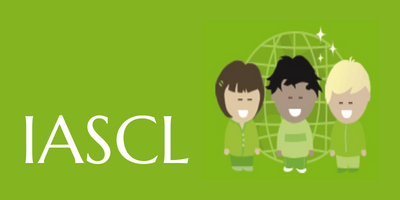Parent report of early child language: News from the MacArthur-Bates CDIs
Virginia Marchman (Stanford University) on behalf of the MacArthur-Bates CDI Advisory Board
December 1st, 2023
While many were skeptical, the field of child language development now generally accepts that parents can be expert observers of their child’s skills in communication and language. As Elizabeth (Liz) Bates once said, “parents do know what they are talking about” (Bates et al., 1988, p. 72).
Following from classic diary studies (e.g., Dromi, 1987) and evolving from several early efforts by Bates and colleagues, the MacArthur-Bates Communicative Development Inventories (CDIs) harness this parental expertise into cost-effective, reliable, and valid assessment tools for children under 3 years. Liz knew that parent report would work best if we adhered to some key principles. First, provide a list of example words or behaviors (e.g., recognition), rather than have caregivers recall examples from memory. Second, focus on current, emerging, and therefore, salient behaviors, rather than require retrospective reports. Over the years, we’ve also refined and improved the instructions and formats of the forms to improve the overall experience.
The American English long forms (Words & Gestures, Words & Sentences) were first published in the 1990s, spawning extensive research on individual differences (e.g., Fenson et al., 1994), as well as offering clinical tools for early assessment. Updated norms followed a decade or so later (Fenson et al., 2007). These instruments provided a comprehensive view of emerging communicative skills, including lexical comprehension (what words the child “understands”) and production (“understands and says”), as well as communicative and symbolic gesture use, and emerging morphology and grammar.
Adaptations to Mexican Spanish (Jackson-Maldonado et al., 2003) and Italian (Caselli & Casadio, 1995) followed shortly. And, thanks to the interest and effort of researchers around the globe, CDIs have by now been developed for more than 100 languages and dialects, with each instrument adapted (not just translated) to fit the linguistic and sociocultural features of that language (see https://mb-cdi.stanford.edu/adaptations.html). Short forms focusing just on vocabulary (Fenson et al., 2000; Jackson-Maldonado et al., 2013) and versions for older children, the CDI-III, have also been developed in many different languages (e.g., Eriksson, 2017).
The CDIs as “big data”
A few years ago, Michael Frank and his team at Stanford University developed Wordbank (http://wordbank.stanford.edu), a structured database of cross-linguistic CDI data consisting of more than 80,000 CDI administrations in 38 different languages. Inspired by other “big data” efforts, such as ChiLDES (https://childes.talkbank.org), Wordbank brings together CDI data from many different labs (http://wordbank.stanford.edu/contributors). The tool also provides a powerful, browsable web interface that allows interactive exploration of individual children (aggregating across words) and of individual words (aggregating across children). Analyses have revealed insights into both the consistency and variability across languages (Frank et al., 2021). Wordbank continues to expand and has become an invaluable tool with many research and teaching applications. Look out for a preconference tutorial on Wordbank at the upcoming IASCL conference in Prague in July 2024!
Figure 1. Example page from Web-CDI, American English Words & Sentences form. Web-CDI is a secure user-interface that allows parents to complete the form on their own laptop or computer (deMayo et al., 2021).
What’s new in 2023?
The year 2023 has brought several new developments for the CDIs. First, we are excited to announce the 3rd edition of the User’s Guide and Technical Manual (3rd Edition) for the American English forms (Marchman et al., 2023), available from Brookes Publishing Co (https://brookespublishing.com/product/cdi). This edition offers more comprehensive guidelines for administration and scoring as well as additional chapters on applications in clinical contexts and with bilingual children. The norming sample for the long forms was expanded (more than 4000 additional children) and state-of-the-art modeling techniques were used to generate improved normative percentiles for all English instruments.
Second, Web-CDI is a secure, web-based online platform for administration and scoring of several CDI forms (deMayo et al., 2021). Caregivers are sent CDIs via a web-link which allows them to complete the CDI on their laptop or home computer (Figure 1). Scores and percentiles can be downloaded as a clinical report or in csv format for data analysis. Use of the American English and Mexican Spanish long forms require a nominal annual license fee (used to support ongoing maintenance of the site), while other forms are available at no charge. See http://webcdi.stanford.edu for more information and to register.
Figure 2. Example of the CDI-CAT interface, available on Web-CDI for American English and Mexican Spanish.
Finally, the CDI-CAT is a new screening tool that provides a quick assessment of vocabulary production (typically less than 5 minutes!) for children learning English or Mexican Spanish. In computerized adaptive testing (CAT; van der Linden & Glas, 2009), parents respond to an individualized list of words, selected based on responses to the previous items (Figure 2). Scoring uses a statistical model based on Item Response Theory (IRT) (Kachergis et al., 2022). The CDI-CAT for American English and Mexican Spanish is administered via Web-CDI, available for a nominal annual fee. CDI-CATs are currently being developed in other languages (French) with others forthcoming.
Looking back and looking forward
This year, 2023, also marks 20 years since the untimely passing of Elizabeth Bates from pancreatic cancer at the age of 56. We are confident that Liz would have been pleased to see the progress that we have made since those early days and proud that the CDIs are well-established in the child language landscape. That progress is due to Liz and the other members of the Advisory Board, but more importantly, to the effort, interest and support of the international child language community. We look forward to many more years of collaboration to improve and expand parent report as a useful tool for child language research in all communities.
For more information on the CDIs: https://mb-cdi.stanford.edu
For more information about Web-CDI: https://web-cdi.stanford.edu
Brookes Publishing Co: https://brookespublishing.com/product/cd


